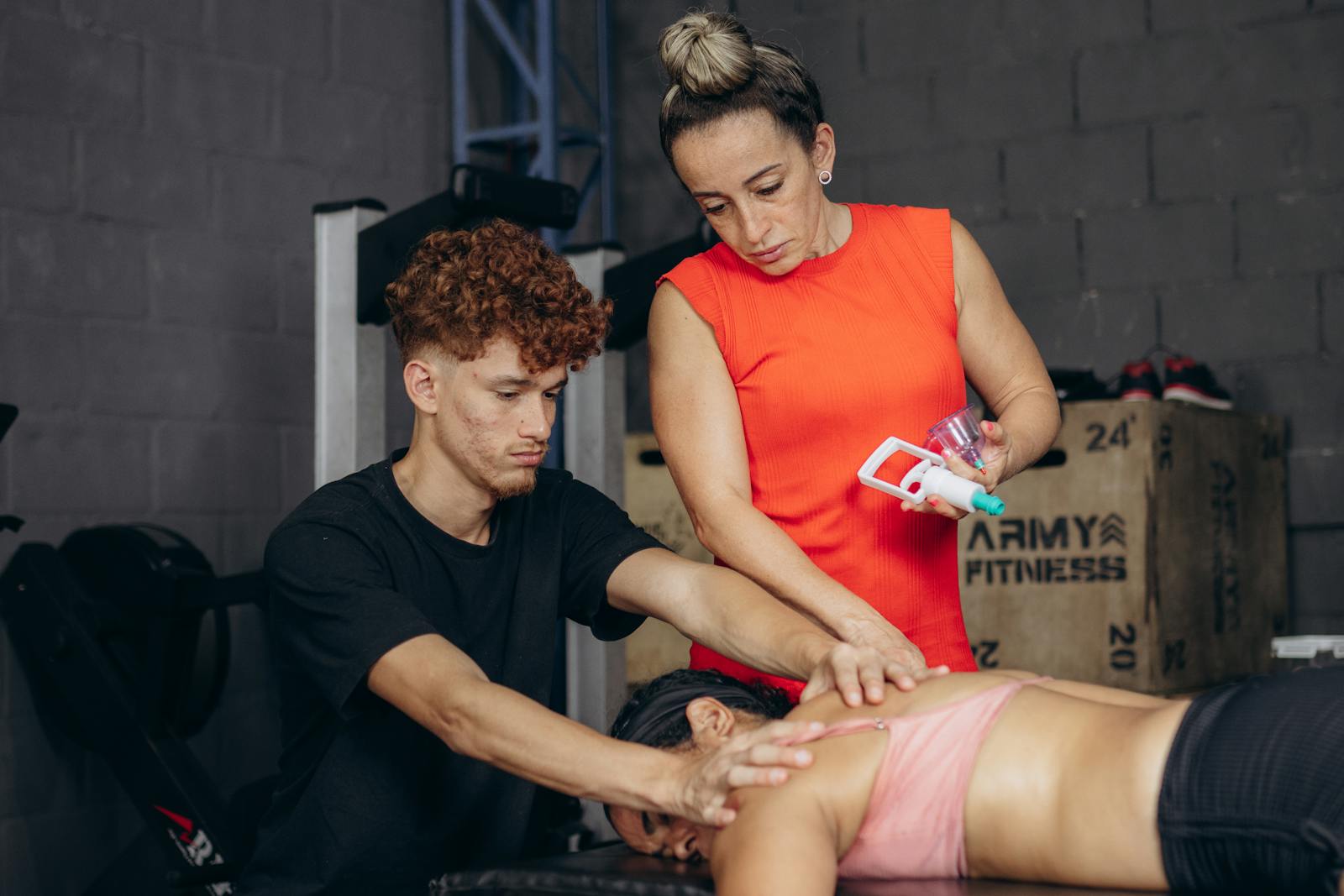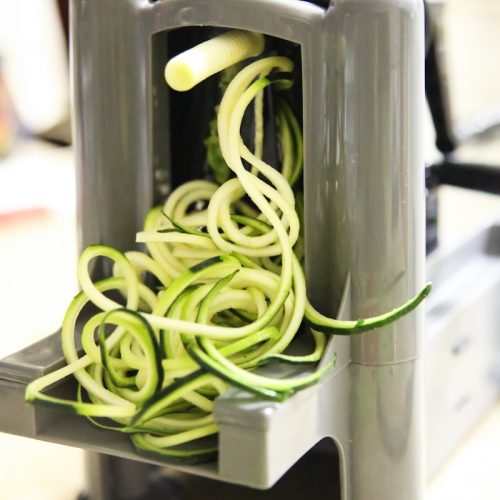Muscle knots, also known as myofascial trigger points, are a common source of discomfort and pain that can affect anyone, from athletes to office workers. These tight, sensitive areas within a muscle can restrict movement, cause pain in other parts of the body, and negatively impact your overall quality of life. In this post, we’ll delve into what muscle knots are, what causes them, how to identify them, and effective strategies to get rid of them and prevent their recurrence.
What Are Muscle Knots?
Muscle knots are small, tight areas within a muscle that feel like nodules or lumps when you palpate the muscle. They are characterized by localized pain and can sometimes refer pain to other areas of the body. Muscle knots are a result of muscle fibers tightening and contracting, forming a palpable knot that is often painful to touch.
Causes of Muscle Knots
Several factors can contribute to the formation of muscle knots:
- Overuse and Repetitive Strain: Engaging in repetitive movements or overusing certain muscle groups can lead to the development of knots. This is common in athletes, manual laborers, and individuals with repetitive desk jobs.
- Poor Posture: Maintaining poor posture for extended periods, such as slouching at a desk or hunching over a phone, can strain muscles and lead to knots.
- Stress and Tension: Emotional stress often manifests physically, causing muscles to tense up and form knots, particularly in the neck, shoulders, and back.
- Injury or Trauma: Direct trauma to a muscle, such as a blow or accident, can result in the formation of knots as the muscle attempts to protect and stabilize itself.
- Dehydration and Poor Nutrition: Inadequate hydration and lack of essential nutrients can affect muscle function and contribute to muscle tightness and knot formation.
- Lack of Movement: Prolonged inactivity or staying in one position for too long can cause muscles to stiffen and develop knots.
Symptoms of Muscle Knots
Muscle knots can present with a variety of symptoms, including:
- Localized Pain: A persistent, aching pain in a specific area of the muscle.
- Referred Pain: Pain that radiates to other parts of the body, such as a neck knot causing headaches.
- Stiffness and Reduced Range of Motion: Difficulty moving the affected muscle or joint.
- Tightness and Tension: A feeling of tightness or tension in the muscle.
- Tenderness: Increased sensitivity when the knot is pressed.
How to Get Rid of Muscle Knots
There are several effective methods to alleviate and eliminate muscle knots. Combining multiple approaches often yields the best results.
1. Self-Massage Techniques
Self-massage is a simple and effective way to target muscle knots. Here’s how to do it:
- Identify the Knot: Locate the tight, tender area within the muscle.
- Apply Pressure: Use your fingers, knuckles, or a massage tool to apply firm, steady pressure directly on the knot.
- Massage in Circles: Gently massage the area in circular motions to increase blood flow and loosen the muscle fibers.
- Hold and Release: Apply sustained pressure for 20-30 seconds, then slowly release. Repeat as needed.
Tools to Enhance Self-Massage:
- Massage Balls: Small, portable balls can help target deeper knots, especially in hard-to-reach areas like the back.
- Foam Rollers: Ideal for larger muscle groups, foam rollers can help break down knots through rolling motions.
- Handheld Massagers: Electric or manual massagers can provide consistent pressure and vibrations to soothe muscle knots.
2. Foam Rolling
Foam rolling, also known as self-myofascial release, helps to release muscle tightness and improve flexibility.
How to Use a Foam Roller:
- Choose the Right Roller: Select a foam roller with appropriate density based on your pain tolerance.
- Target the Affected Area: Place the foam roller under the muscle with the knot.
- Roll Slowly: Gently roll back and forth over the muscle, focusing on the knot.
- Pause on Tender Spots: When you find a sore spot, hold the roller there for 20-30 seconds to allow the muscle to release.
3. Stretching
Regular stretching can help prevent and alleviate muscle knots by improving flexibility and reducing muscle tension.
Effective Stretches for Muscle Knots:
- Neck Stretch: Gently tilt your head to one side, bringing your ear toward your shoulder. Hold for 20-30 seconds and switch sides.
- Shoulder Stretch: Bring one arm across your chest and use the opposite hand to press it closer, stretching the shoulder muscles.
- Hamstring Stretch: Sit with one leg extended and reach toward your toes, holding the stretch for 20-30 seconds.
4. Heat and Cold Therapy
Alternating heat and cold therapy can reduce inflammation, increase blood flow, and relax tight muscles.
Heat Therapy:
- Warm Bath or Shower: Soaking in warm water helps relax muscles and ease tension.
- Heating Pads: Apply a heating pad to the affected area for 15-20 minutes to promote blood flow and muscle relaxation.
Cold Therapy:
- Ice Packs: Apply an ice pack wrapped in a cloth to reduce inflammation and numb pain. Use for 10-15 minutes at a time.
- Cold Compresses: Useful immediately after an injury or intense exercise to minimize swelling and pain.
5. Hydration and Nutrition
Proper hydration and a balanced diet support muscle health and prevent knot formation.
- Stay Hydrated: Drink plenty of water throughout the day to keep muscles hydrated and functioning properly.
- Balanced Diet: Ensure your diet includes essential nutrients such as magnesium, potassium, and calcium, which are vital for muscle function and relaxation.
- Electrolyte Balance: Maintain a proper balance of electrolytes to prevent muscle cramps and tightness.
6. Proper Posture and Ergonomics
Maintaining good posture and an ergonomic workspace can prevent muscle knots, especially in the neck, shoulders, and back.
- Adjust Your Workspace: Ensure your desk, chair, and computer are set up to promote good posture. Your screen should be at eye level, and your chair should support your lower back.
- Frequent Breaks: Take regular breaks to stand, stretch, and move around if you have a sedentary job.
- Mind Your Posture: Be conscious of your posture throughout the day, keeping your back straight and shoulders relaxed.
7. Professional Treatments
If self-care methods aren’t providing sufficient relief, professional treatments can help eliminate muscle knots.
Massage Therapy:
- Deep Tissue Massage: Targets deeper layers of muscle and connective tissue to release knots.
- Trigger Point Therapy: Focuses on specific trigger points to alleviate pain and muscle tightness.
Physical Therapy:
- Personalized Exercises: A physical therapist can design a program to strengthen and stretch muscles, preventing knot formation.
- Manual Therapy: Techniques such as myofascial release and joint mobilization can help reduce muscle tension.
Dry Needling:
- Technique: Involves inserting thin needles into the muscle knot to release tension and improve blood flow.
- Benefits: Can provide immediate relief from muscle pain and tightness.
8. Mind-Body Practices
Incorporating mind-body practices can help reduce overall muscle tension and prevent the formation of knots.
Yoga:
- Benefits: Enhances flexibility, reduces stress, and promotes muscle relaxation.
- Recommended Poses: Child’s Pose, Downward Dog, and Pigeon Pose are particularly effective for releasing muscle tension.
Meditation and Relaxation Techniques:
- Stress Reduction: Practices like meditation, deep breathing, and progressive muscle relaxation can lower stress levels, preventing muscle knots caused by tension.
Prevention Strategies for Muscle Knots
Preventing muscle knots involves maintaining overall muscle health and minimizing factors that contribute to muscle tension.
- Regular Exercise: Engage in regular physical activity to keep muscles strong and flexible. Incorporate both strength training and stretching into your routine.
- Balanced Workouts: Avoid overworking specific muscle groups. Ensure you have a balanced workout plan that targets all major muscle groups.
- Stay Active: Avoid prolonged periods of inactivity. Take breaks to move and stretch throughout the day, especially if you have a desk job.
- Proper Lifting Techniques: Use correct form when lifting heavy objects to prevent muscle strain and knot formation.
- Manage Stress: Implement stress management techniques to reduce muscle tension caused by emotional stress.
When to Seek Medical Advice
While muscle knots are generally benign and can be managed with self-care, there are instances when medical attention is necessary:
- Persistent Pain: If muscle soreness and pain persist despite self-treatment, consult a healthcare professional.
- Severe Pain or Weakness: Intense pain or muscle weakness may indicate a more serious condition, such as a muscle tear or nerve impingement.
- Signs of Infection: If the area around the muscle knot becomes red, swollen, or warm to the touch, seek medical advice as it could indicate an infection.
- Limited Mobility: If muscle knots severely restrict your range of motion or interfere with daily activities, professional intervention may be required.
Conclusion
Muscle knots can be a source of significant discomfort, but with the right strategies, you can effectively eliminate them and prevent their recurrence. Understanding the causes and recognizing the symptoms is the first step toward managing muscle knots. Incorporate self-massage, foam rolling, stretching, and proper hydration into your routine, and consider professional treatments if needed. Additionally, maintaining good posture, managing stress, and ensuring a balanced diet are essential for overall muscle health. By taking proactive measures, you can keep your muscles loose, flexible, and free from painful knots, allowing you to enjoy a more active and pain-free life.
Tags: muscle knots, myofascial trigger points, muscle pain, self-massage, foam rolling, stretching, heat therapy, cold therapy, muscle recovery, muscle health, muscle tension, physical therapy, massage therapy, prevention tips, fitness recovery





